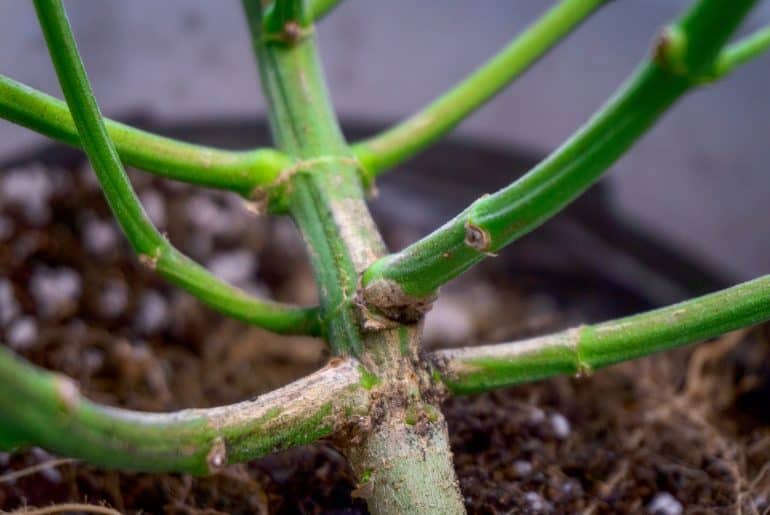If you are serious about growing cannabis at home, or maybe you’re just curious about the plants themselves, knowing the anatomy is important.
You might think that marijuana plants are extremely simple and consist of just stems and flowers, but this is not at all the case. Marijuana or cannabis plants are in fact quite complex and contain no fewer than 13 different parts of anatomy.
This includes, but is not limited to, their seeds, roots, stems, nodes, families, flowers, stigmas, trichomes, and more. All of the different parts of the cannabis plant anatomy that we’re about to discuss today play crucial roles at one point or another during the growth process.
Today, we want to provide you with a complete and detailed breakdown of cannabis plant anatomy, so you can become intimately familiar with these plants. The more familiar you are with them, the better your chances of success will be when attempting to grow these awesome plants.
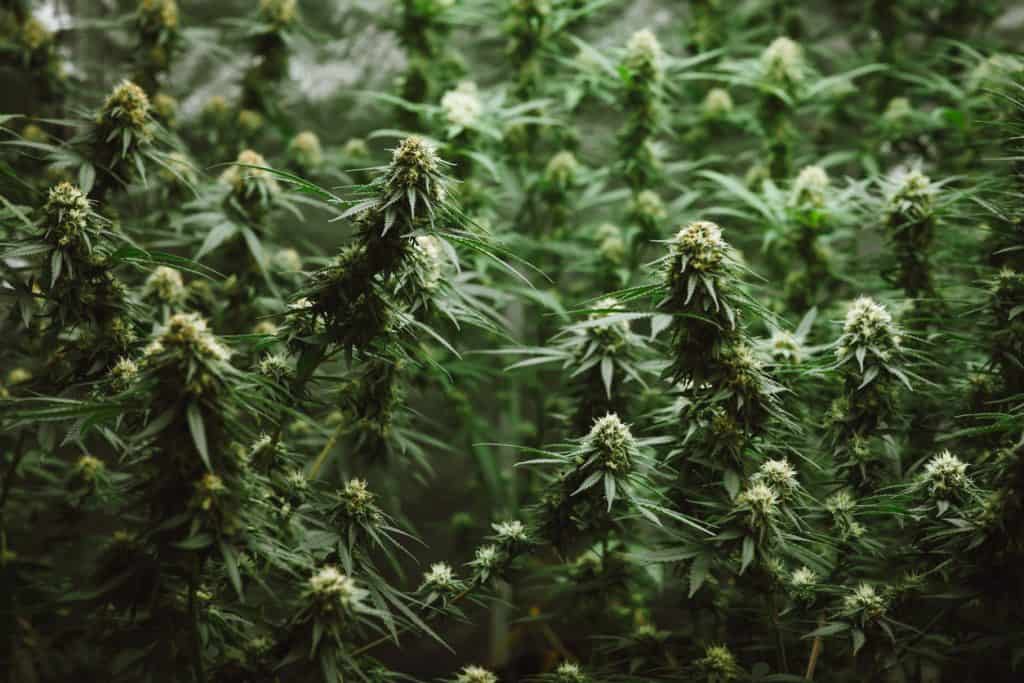
1. The Seeds
Although some might argue that these seeds are not actually a part of the cannabis plant, we argue otherwise, because after all, it all starts with the right seed. Yes, what we are seeing here is that you first need to purchase the right kinds of seeds.
You can choose between indica and sativa strains, and knowing the difference between those two is important for growth. The most important difference between those two is that indica plants tend to be relatively short and stalky, whereas sativa plants are taller and skinnier.
This might make a difference for you depending on how much space you have to spare. Furthermore, you also want to ensure that you choose feminized seeds, as this type of seed guarantees that you will get female plants. If you are looking for potent buds, you definitely don’t want male plants growing.
To get a cannabis seed to sprout, you will first need to germinate it. This means placing it inside of a wet paper towel, and then inside of the plastic bag, or using seed starter trays works as well. Providing the seed with adequate moisture and temperature levels will cause it to break open, with a sprout and roots emerging, therefore providing you with the beginning of your cannabis plant.
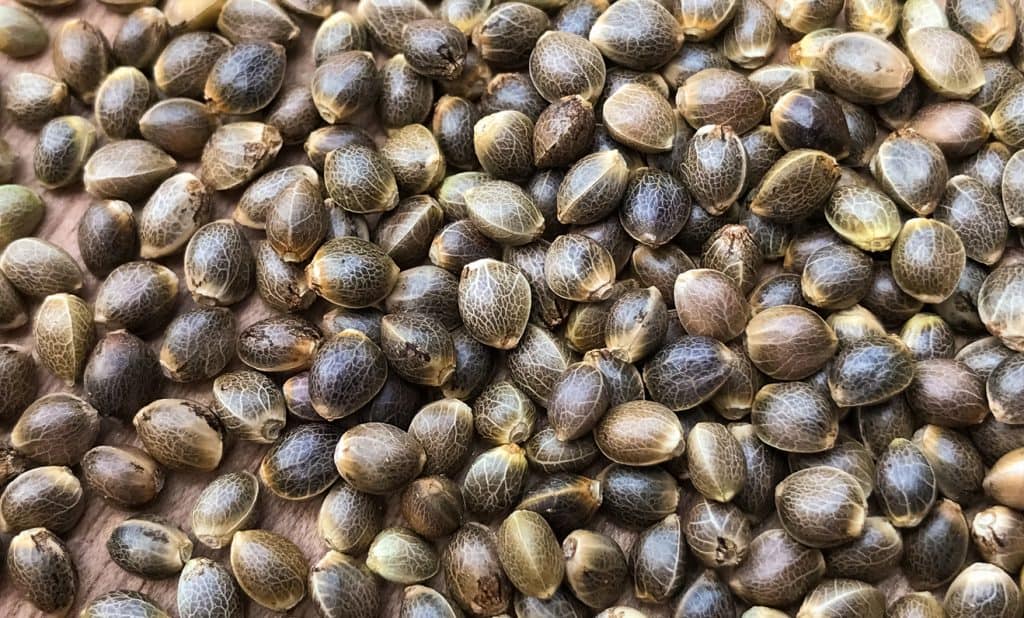
2. The Roots
The next most important piece of anatomy of the cannabis plant are the roots. Without a solid root structure, cannabis plants would not be able to grow properly. The roots of the cannabis plant, just like with any other plant, are designed to absorb nutrients water, and other substances from the soil or other type of growing medium they are planted in.
The bigger and healthier the roots are, the more water and nutrients your plant can take up, the bigger and stronger your plant will grow. Therefore, maintaining a healthy root system is essential to the overall health of your cannabis plant and the end result. This means that soil needs to have the right pH level, the right moisture level, and the right temperature.
Roots are very fragile, and if they are too hot or too cold, in soil that is too acidic or too alkaline, or if they are too wet or too dry, these issues can all cause major problems with the overall health of your cannabis plant. If the roots are not healthy and growing in the proper conditions, they won’t be able to absorb the nutrients and water necessary for the survival of your cannabis plant.
3. The Cotyledon Leaves
When your cannabis plant first sprouts out of the ground, one of the first things you should see are the cotyledon leaves. These are the very first leaves that you will see growing out of the seed after it has germinated. With successful germination, you should see two very basic rounded leaves, followed by two leaves that have ridges on them.
No, these will not yet look like classic marijuana leaves, but they are certainly a good start. In the beginning, be sure to provide these leaves with adequate light, but not too much, because they are still fragile and susceptible to being burnt.
However, you also don’t want the lights to be way too far away from these leaves and your seedling, because this will cause the seedling to stretch out, thus causing the stem or stalk to become too thin, which brings us to our next point.
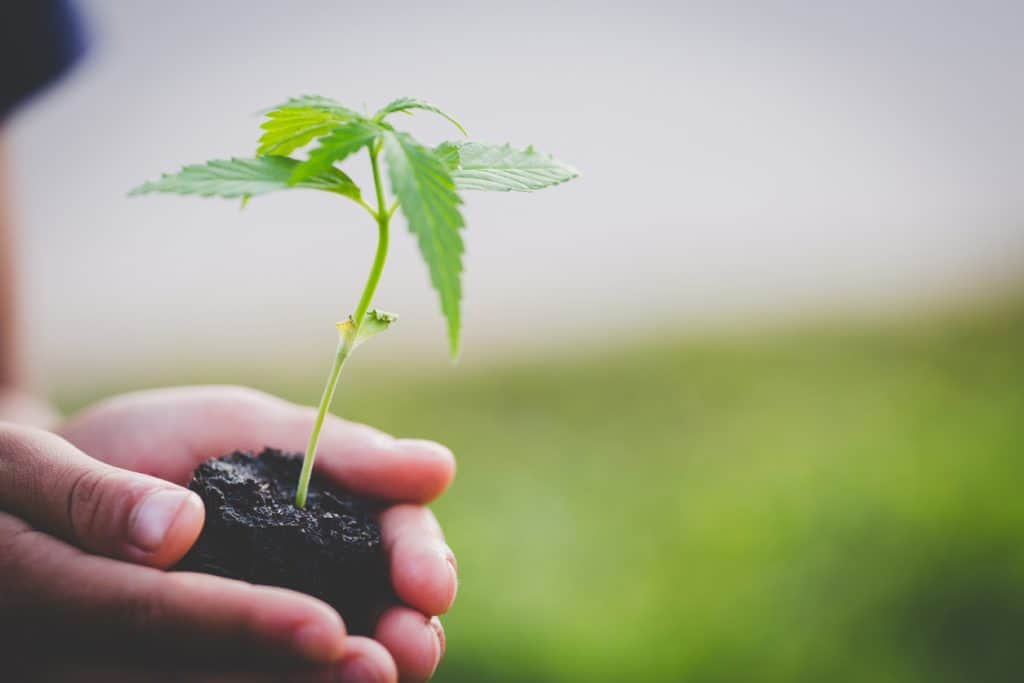
4. The Stem or Stalk
We then have the main stem of the cannabis plant, otherwise known as the stalk. This is the thick trunk-like part of the plant that grows straight upwards from the roots, and it is designed to support all of the lateral branches.
One of the main purposes of the stem is not only to support all of the lateral branches, and the buds that will grow off of them, but to provide the plate with stability and structure in general.
One good trick if you plan on having your stem being very strong is to provide it with plenty of air flow. Forcing your cannabis plant to fight against a moderate amount of wind is like training your muscles at the gym. It causes the stem to become much thicker, and therefore better able to support increased amounts of weight.
Having a cannabis plant stem that is too thin is a big problem, especially as the plant begins to flower, because it won’t be able to support the weight of the branches and the flowers. Something else that many growers do is to top their plant stems after about five nodes. This will force your cannabis plant to stop growing vertically, thus causing it to focus its energy on lateral or outward growth.
5. The Branches
The next important part of cannabis plant anatomy is the branch or branches. At the nodes, which we will discuss below, branches grow out of the main stalk or stem of the cannabis plant. The branches are very important, because these will support the growth of the fan leaves.
The fan leaves are designed to take up as much sunlight as possible so the cannabis plant can engage in photosynthesis, therefore allowing to grow bigger and faster. The branches will then also support all of the flowers or buds, which is of course what you are aiming to grow.
Just like the stems of your plant need to be big and strong, so do the branches, and once again, trading them with a bit of air flow can certainly help on this front. Furthermore, just like many people top the main stem of the cannabis plant, many people also top the branches, as this tends to encourage more bud growth.
6. The Nodes
We then have the nodes of the cannabis plant, which occur on the main stem. The nodes are the points where the branches grow off of the stems. The nodes are also the points on the branches where other smaller branches grow out of the primary branches.
Buds and fan leaves may also grow on some of the nodes, but this is not always the case. The most important part you need to know about the nodes of cannabis plants is that these are the areas that you will look at in order to determine their sex. If you have a male plants, you will see what are known as pollen sacks, which kind of look like little balls.
If you have female plans, you should see pistils, or little hairs, growing out of these nodes. If you plan on growing potent cannabis buds, it is female plans that you want, not male plants, so being able to determine whether or not you have female plans is important.
Remember that a single male plant can pollinate all of the female plants in the vicinity, therefore effectively ruining your crop. Being able to tell if you have a male plant, and therefore being able to remove it from the area as soon as possible, is extremely important to the overall success of your project.
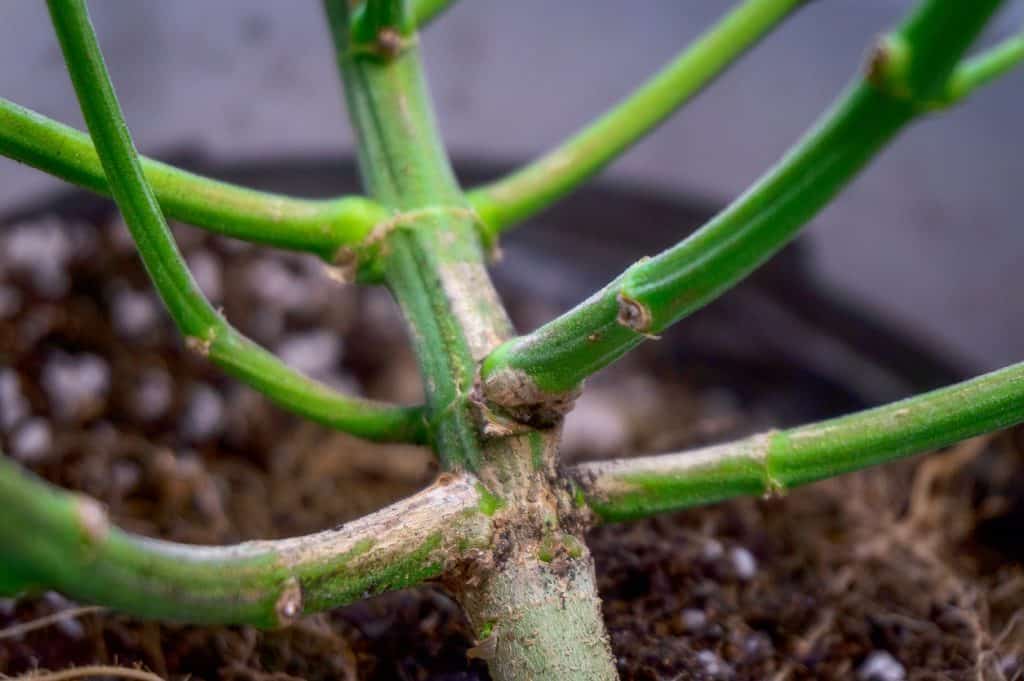
7. The Fan Leaves
Next, we have the fan leaves of the cannabis plant. The fan leaves are those classic marijuana leaves that you are probably used to seeing. Although the fan leaves aren’t directly responsible for growing buds, they are very important. Once again, the primary function of the fan leaves on a cannabis plant is to absorb as much sunlight as possible.
Cannabis plants, just like all other plants out there, require sunlight in order to perform photosynthesis. Photosynthesis involves the conversion of nutrients into food sources, such as sugars, that the plant requires to grow. Without adequate fan leaves, cannabis plants can’t absorb enough sunlight to grow properly, which at the end of the day it results in subpar yields and low potency buds.
Most of the fan leaves will grow during the vegetative state, as this is when the cannabis plant gets ready to start flowering. When it starts flowering, the cannabis plant will start focusing its energy more on creating the buds and flowers rather than on growing more fan leaves.
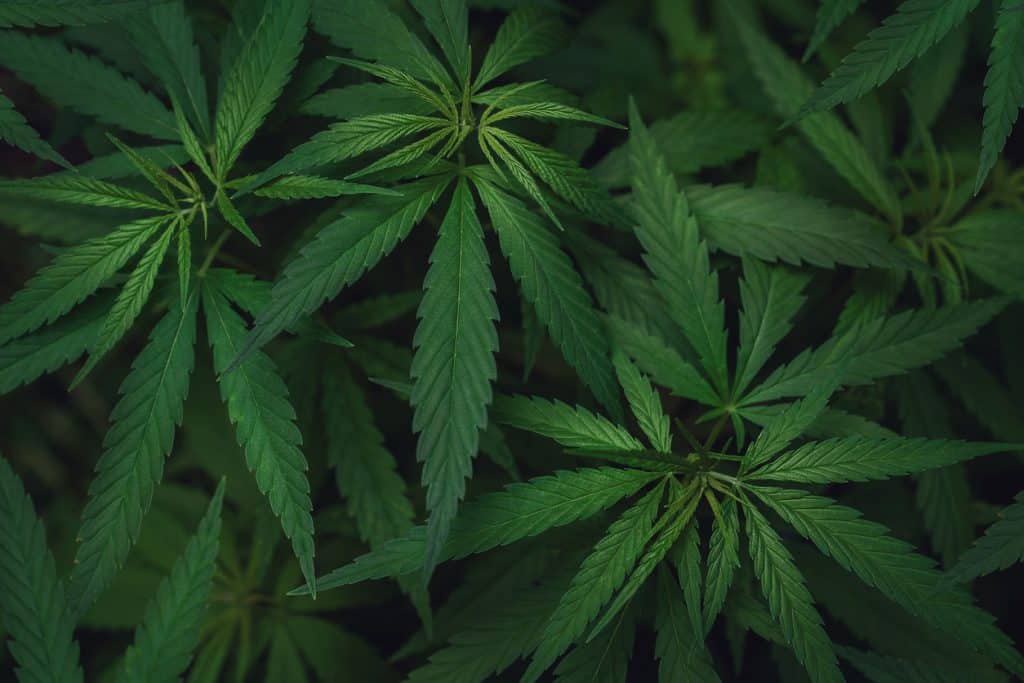
8. The Sugar Leaves
We then have the sugar leaves of the cannabis plant. These are very small leaves that are usually coated in a lot of resin, and you’ll see these on the exterior of the buds. These leaves tend to be fairly inconsequential not overly important in the grand scheme of things.
These sugar leaves are usually trimmed off during the harvesting and trimming process, and are often used to make extracts, pre rolled joints, and other related cannabis products.
One of the defining features of the sugar leaves however is that as the cannabis plants begins to mature, they often turn color, and are often vibrant green, purple, or reddish in color.
9. The Flowers
Alright, now we’re getting to the part of the cannabis plant that you’re probably most interested in, the flowers, otherwise known as the buds. The whole point of growing a cannabis plant is to get as many high potency buds or flowers as you can.
You’ll see the flowers growing all over the plant. Mainly, you’ll see a very large bud growing at the top of the stem, known as the cola, which we’ll take a look at further below.
However, you’ll also see plenty of buds growing at the ends or crowns of all of the branches, as well as out of the nodes on the branches and sometimes on the stem. The flower is of course the most important part because this is what you’re going to smoke or use to create extracts, edibles, and more.
The buds are what contain all of the relevant cannabinoids, terpenes, and flavonoids that we all love so much. If properly grown, some of these flowers may contain 30% THC or more, along with plenty of other cannabinoids and flavor producing terpenes.
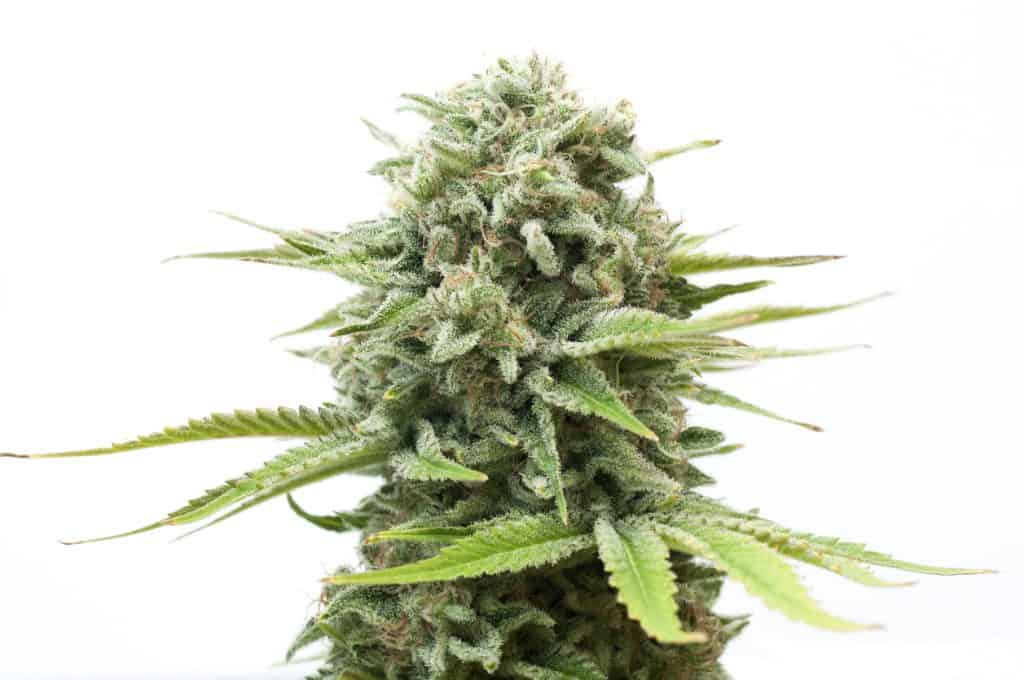
10. The Cola
We then have the cola of the cannabis plant. First, we have the main cola, which is the largest bud that grows out of the top of the stem of the cannabis plant.
This is the main cola because it’s going to be the largest one. Technically speaking, a cola is a cluster of buds that grows very tightly together at a certain location.
While the main cola grows at the top of the stem, there are also plenty of smaller colas that grow along the lower branches at various budding sites. The colors are really dressed where any clusters of buds start to form.
11. The Bract and Calyx
There is then the bract, which is the part of the female cannabis plants anatomy which encapsulates the reproductive parts. These look like tear-shaped leaves and are generally covered in a lot of resin glands. In fact, the bracts of the cannabis plant are where a lot of cannabinoids are produced.
Technically speaking, the bract is separate from the actual bud or flower, but many people consider them to be the same things, because when you harvest the flowers, the bract usually always comes along with the main flower.
We then have the calyx, which is a translucent layer at the base of the flower. This is not visible to the naked eye, and is designed to protect the ovule of the female plant.
This is effectively a protective case that protects the rest of the flower, and also provides it with some stability. Generally speaking, when you harvest the buds or flowers, all of these components come along for the ride.
12. The Pistils and Stigmas
We then have the pistil of the cannabis flower. Technically speaking, the pistil is what contains the reproductive parts of the cannabis flower, and while many people think that those white or amber hairs that grow out of the buds are the pistils, technically speaking, those vibrant hairs are referred to as the stigmas.
These stigmas first start out as white or translucent, and as the plant matures, progressively get darker, eventually turning yellow, orange, red, and then amber as the plant becomes ready to harvest.
Although these stigmas and pistils themselves don’t do much in terms of potency or flavor, they do serve a very important role, which is reproduction. Pistils on the female cannabis plant are designed to capture the pollen released by the male plants, therefore required for pollination.
For the record, the pistils and stigmas actually grow out of the calyxes of the flower. Although not quite as simple, you can think of the stigmas as growing from the pistils, with the pistils growing out of the calyxes, and the calyxes growing on the inside of the bracts of female cannabis plants. They’re all intimately connected to one another.
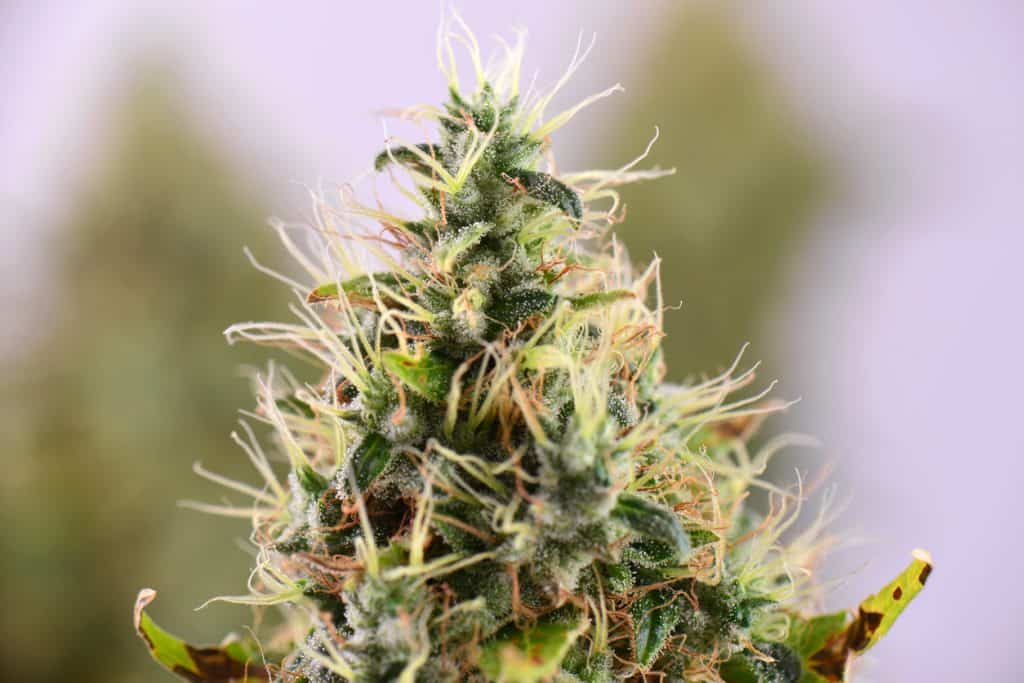
13. The Trichomes
Finally, we then have the trichomes. Many people refer to trichomes as crystals, because when put under a magnifying glass, they look like white crystals. You really can’t see them properly without a magnifying glass, at least not individual trichomes. However, when a cannabis plant matures and those trichomes cover the exterior of a bud, then they can easily be seen by the naked eye.
A very high-quality cannabis bud that is rich in cannabinoids should appear to have almost a frosty white layer of sugar on the outside. Trichomes are little mushroom-shaped glands that grow on the calyxes, stems, and leaves of the cannabis plants.
Trichomes on cannabis plants serve the purpose of protecting against the elements and predators. In fact, the trichomes are where most of the terpenes are produced, which are essentially the aromatic oils of the plant, which are designed to keep predators and diseases away.
However, these trichomes are also where a lot of the THC, CBD, and other cannabinoids are produced. Therefore, the thicker that layer of white crystals on the outside of your buds, the more potent those buds are likely to be.
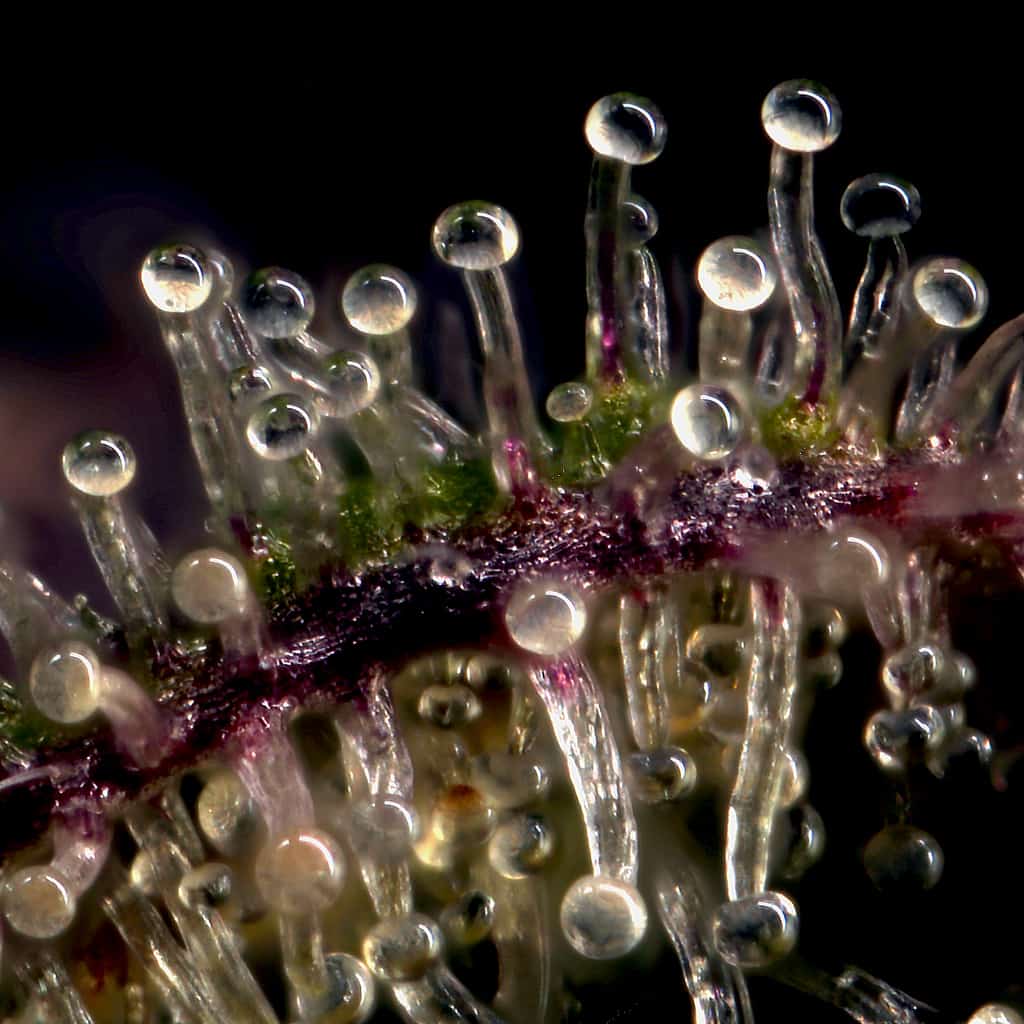
Telling the Difference Between Male and Female Cannabis Plants
When it comes to the anatomy of the cannabis plant, one of the most important aspects is being able to tell apart males from females. The issue with cannabis plants is that they are dioecious in nature, which means that they can be either male or female. What you smoke or use to create extracts always comes from a female plant, as the female plant is what produces the flowers.
Only the female cannabis plants produce flowers that secrete resin which contain all of those cannabinoids. Male plants on the other hand produce pollen sacs at the base of the leaves, which are designed to pollinate the females. If you leave male plants growing beside female plants, those pollen sacks will pollinate the pistils on the female plants, resulting in the female plants effectively turning into males, and no longer producing flowers.
This essentially ruins your female plants and prevents you from producing any actual buds. The issue is that unless you get feminized seeds, telling males from females is only possible by anywhere between four and six weeks of vegetative growth.
By around six weeks, when you look at the nodes of your plants, you will see either bracs or small pollen sacks. If you see bracts, those small tear-shaped leaves, then you probably have a female, but if you see round pollen sacks, you have a male. If you find male plants, you need to remove them from the space right away, before they get a chance to pollinate and ruin the females.
Conclusion
As you can see, cannabis plants are substantially more complex than one might at first think. Some of the most crucial parts of the cannabis plants are the roots, the stems, the fan leaves, the flowers, the cola, and the pistols and trichomes.
The more familiar you are with the different parts of the cannabis plant, the better you can optimize the growth process, recognize problems, and produce bigger and more potent yields. Now that you’ve read through a detailed breakdown of the anatomy of a cannabis plant, you can be a much better informed grower.

